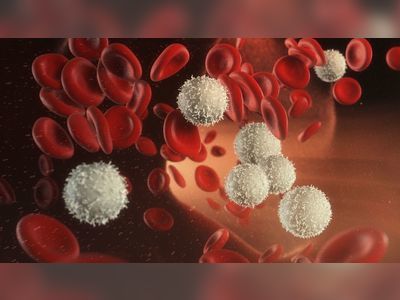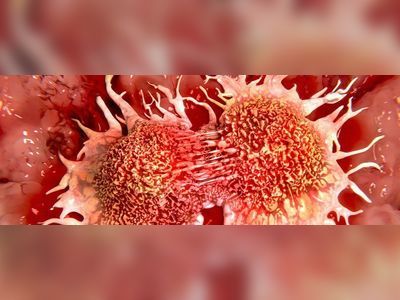
Can Trigger Point Injections Treat Your Pain?
Keep waking up with that painful knot in your back? You may be among the millions of people who experience ongoing pain from trigger points, or tight knots deep in the muscle tissue. According to an article published in Practical Pain Management, trigger points may affect as many as 44 million people in the United States alone, although some researchers believe the true number is even higher.
That’s because trigger points often cause pain in unrelated parts of the body, and contribute to many other conditions, like migraines and tension headaches, explains Huma U. Sheikh, MD, CEO of NY Neurology Medicine and assistant professor at Icahn School of Medicine at Mount Sinai. This “referred pain” is a hallmark characteristic of an active trigger point. It occurs when the hypersensitive muscle knot irritates surrounding nerves, allowing the pain to travel along nervous system pathways to other areas of the body.
It’s a painful experience, which is why some people seek out trigger point injections. Here’s what you need to consider before opting for trigger point therapy.
How do trigger points form?
Trigger points develop thanks to a natural, protective response. When a part of the body is under stress, the nervous system signals the muscle to tighten up, helping to prevent further damage. Experts say there are generally two ways this reflex forms a trigger point. For example, acute muscle trauma like a sudden sprain or sports injury can cause the surrounding tissue to painfully knot up. Repetitive microtraumas from muscle overuse can also form a trigger point.
Sitting at a desk without back support, moving heavy objects at your job, exercising with improper form, and even holding a telephone to your ear for long periods of time can all put stress on muscle fibers, creating a trigger point. These sorts of occupational and recreational activities are why trigger points most often form in the shoulder or back muscles, according to a study published in BMC Musculoskeletal Disorders—but they can develop in any muscle group.
Research published in American Family Physician also points to several conditions that increase someone’s risk for developing a trigger point, including:
Poor posture
Vitamin deficiencies
Sleep issues
Lack of exercise
Joint problems
What do trigger points feel like?
Trigger point pain can be complex and sometimes difficult to pinpoint, so referred pain is a defining feature. American Family Physician also reports that patients often describe this referred trigger point pain as spreading or radiating throughout regions of their body.
Active trigger points will cause this persistent pain when at rest. Depending on the trigger point’s location and how the pain disperses, it can:
Make it difficult to maintain good posture
Affect full range of motion and cause joint pain
Lead to tension headaches or migraines
Cause tinnitus, or a ringing sensation in your ears
The research article in American Family Physician explains that latent or inactive trigger points are muscle knots that don’t usually cause ongoing or spontaneous pain. Still, they can restrict movement and cause muscle weakness. They may also worsen over time if left untreated.
What is trigger point injection therapy?
“Trigger point therapy targets different areas within the muscles to relieve pain and the knots that people experience,” says Rahul Shah, MD, a board-certified orthopedic spine and neck surgeon. This therapeutic approach includes physical therapy exercises, direct muscle pressure, and an outpatient treatment called a trigger point injection. The goal of this injection, Dr. Shah explains, is to break up the muscle spasm and encourage blood flow to the area, which further loosens the trigger point.
Dr. Sheikh says an injection also often contains a local anesthetic, such as lidocaine or bupivacaine. This medication works to help break up the knot while numbing the affected muscles and nearby nerves. “This [numbing] can help provide some temporary relief, during which time a person can work on the underlying issue of the muscle tightness, like with physical therapy or other techniques,” she says.
On average, the injection’s effects can last anywhere from a few days to a few months, depending on factors like a patient’s treatment plan, adherence to it, and the extent of the underlying condition. Trigger point injections may also include a corticosteroid. This medication provides a strong anti-inflammatory effect and relieves pain caused by muscle damage or scar tissue, explains Sean Marchese, MS, RN, a registered nurse who specializes in pain management at the Mesothelioma Center in Orlando, Florida.
Trigger point injections with Botulinum Toxin
Researchers continue to explore different ways to administer trigger point injection therapy. A 2020 study published in Toxins reports that injecting the Botulinum toxin-more commonly known as Botox-into trigger points may be an effective treatment for people with chronic shoulder pain, for example.
Botox is also approved by Health Canada to treat chronic migraines. The toxin soothes both local and referred trigger point pain by blocking the nervous system signals that keep muscles tight, helping to loosen chronic knots. However, research is ongoing to establish the toxin’s effectiveness for use in trigger point injections.
Dry needling for trigger points
Dry needling is a trigger point therapy technique that involves no medications. It stimulates a trigger point, Marchese explains, creating a local twitch response and increasing blood flow to release built-up tension. “Dry needling can also help identify a patient’s pattern of pain response, identifying the location and trigger of their deep tissue pain,” he says. Research in the Journal of Manual & Manipulative Therapy found that dry needling also activates the nervous system to release endorphins—the body’s natural pain reliever.
It’s generally an alternative to trigger point injections for people who want to avoid using medication or have an allergy or sensitivity to drugs like corticosteroids. According to a 2021 study in the Journal of Shoulder and Elbow Surgery, the technique is just as effective-and potentially more effective-in treating trigger point pain as injections containing medication. That said, the lack of a local anesthetic means that dry needling can be a more uncomfortable or painful treatment.
What to expect during a trigger point injection
A trigger point injection is a quick, outpatient procedure that generally takes about 10 to 30 minutes, depending on the extent of your treatment needs. Marchese says that because the injection is administered straight into the muscle tissue, you can usually continue to use your regular medications, including blood-thinning drugs like aspirin, ibuprofen, or naproxen. But make sure to get your doctor’s approval. “You should also eat and drink adequately before your procedure,” he says. “Patients who are nervous or anxious around needles may get lightheaded or dizzy during the injection if they haven’t eaten enough.”
You may experience brief pain during the injection itself, and some people report post-treatment soreness that resolves within a few hours. Still, because trigger point injections often contain a numbing agent, discomfort is less common than with dry needling techniques.
Doctors also recommend taking it easy and limiting activity following an injection, though you should be able to resume your normal routine the following day. In some cases, trigger point injections may contain a mild sedative-which means you’ll need someone else to drive you home after the procedure.
Make sure to check with your doctor about your treatment and the medications involved so you can plan accordingly.
Are trigger point injections safe?
Dr. Shah says the risk of complications is very low for trigger point injections. In rare cases, patients may develop an infection at the injection site or-even more rarely-can incur muscle or nerve damage.
The most common side effects include:
Soreness and bruising around the injection area
Temporary numbness
Muscle stiffness
While these side effects are normal, contact your doctor if they don’t start to improve within a week.
Is trigger point injection therapy effective?
Trigger point injections can provide relief for people experiencing chronic muscle pain, including pain caused by:
Acute muscle trauma, like from a sports injury
Repetitive muscle overuse
Myofascial pain syndrome, a condition that affects the muscles and soft tissues
Fibromyalgia, a chronic pain disorder
Migraines and tension headaches
However, experts say everyone responds a bit differently to the treatment. That’s why trigger point injections are often part of a broader pain management plan, used in combination with evidence-based strategies like:
Physical therapy
Ischemic pressure exercises with tools like a foam roller or tennis ball
Myofascial release massage
Over-the-counter pain relievers
Muscle relaxers
Attention to stretching, good posture, proper exercise technique, and getting enough physical activity—all of which can also help keep your trigger points from reforming
“The most important element on whether a trigger point injection is likely to work hinges on the underlying diagnosis,” Dr. Shah explains. For example, he says a pinched nerve can mimic trigger point pain—and in that case, an injection is unlikely to bring someone relief.
American Family Physician reports that additional injections aren’t recommended if you don’t feel much improvement after two or three attempts. There may be another cause of your discomfort, Dr. Shah says, and it’s worth evaluating alternative explanations for your muscle knots.
Is trigger point injection therapy right for you?
The best candidates for trigger point injections are people with chronic pain deep within the muscle tissue that doesn’t respond to standard treatments, such as physical therapy or over-the-counter pain relief medications. “Many patients who benefit from trigger point injections have suffered muscle damage from repetitive stress injuries, trauma from work or car accidents, or failed surgeries that left behind deep areas of scar tissue,” Marchese says.
It’s also an option to help people treat and manage chronic pain conditions, like fibromyalgia, myofascial pain syndrome, migraines, and chronic tension headaches.
Speak to your doctor to see if you’d benefit from trigger point injection therapy and, in the meantime, check out other ways to manage chronic pain.











